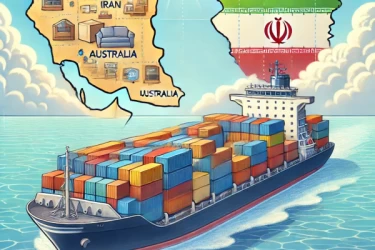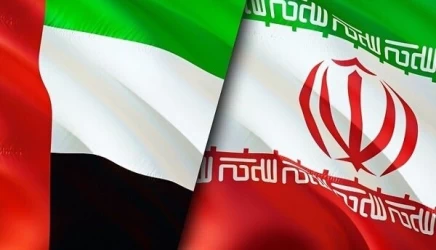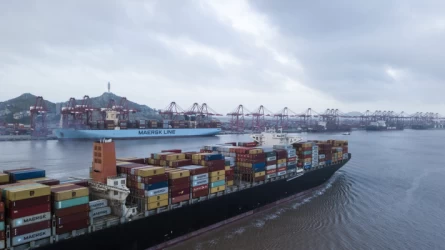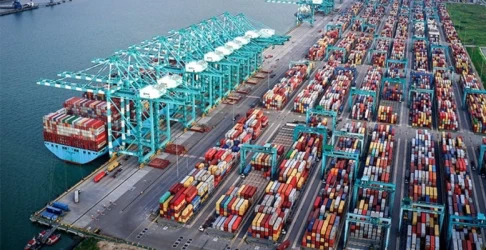Guide to trade with Qatar, sea freight
Qatar, with its strategic location in the Arabian Gulf, plays a significant role in global trade. Over the last few decades, the country has rapidly expanded its infrastructure to become a major hub for shipping and trade in the Middle East. This article provides a comprehensive guide to doing business with Qatar, focusing on marine transport.
1. Overview of Qatar’s Trade Environment
Qatar’s economy is heavily reliant on its vast reserves of natural gas and oil, but in recent years, the nation has worked toward diversifying its economy. This shift has led to the expansion of non-oil sectors, including trade, transport, and logistics.
As one of the wealthiest countries per capita, Qatar’s market presents a range of opportunities for exporters, especially in infrastructure, energy, technology, and consumer goods. Qatar’s trade regulations are relatively straightforward compared to other Middle Eastern countries, but businesses must comply with specific requirements, particularly in customs, taxation, and regulations set by the Qatar Free Zones Authority (QFZA).
2. Marine Transport in Qatar: Key Ports and Facilities
Qatar’s most significant asset in marine transportation is Hamad Port, one of the largest and most technologically advanced ports in the Middle East. Opened in 2017, Hamad Port plays a central role in supporting Qatar’s import and export trade by handling large container ships, general cargo, and bulk shipments.
Hamad Port can process over 7.5 million TEU (twenty-foot equivalent units) annually, supporting trade routes across Asia, Europe, and the Americas. The port is strategically placed near the Mesaieed Industrial City and Ras Laffan Industrial City, contributing to its effectiveness in handling industrial goods.
Other notable ports include Doha Port, which focuses on cruise ship tourism, and Mesaieed Port, which handles large shipments related to the petrochemical and steel industries.
3. Key Commodities for Import and Export
Qatar primarily exports liquefied natural gas (LNG), oil, and related by-products. These exports drive much of the marine traffic coming into and out of Qatar. Other exports include petrochemicals, fertilizers, and steel.
On the import side, Qatar heavily relies on marine transport for consumer goods, machinery, electronics, foodstuffs, building materials, and vehicles. The country’s drive toward self-sufficiency has created new opportunities for importers of agricultural technologies, advanced manufacturing equipment, and sustainable energy solutions.
4. Regulations for Marine Transport and Trade
Companies looking to engage in marine transport or trade with Qatar must adhere to specific customs regulations and tariffs. Qatar’s Single Window system (Al Nadeeb) is an online platform designed to simplify the customs clearance process. Goods entering the country must meet Qatar's stringent quality control and health and safety standards, as well as obtain necessary permits.
For businesses, understanding Qatar’s Free Zones is essential. The Qatar Free Zones Authority (QFZA) manages areas designed to attract international businesses by offering incentives like 100% foreign ownership, tax exemptions, and simplified customs procedures. Two key free zones are Ras Bufontas Free Zone (close to Hamad International Airport) and Umm Alhoul Free Zone (adjacent to Hamad Port).
5. Opportunities and Challenges in Marine Trade
The growth of Qatar’s logistics and marine infrastructure presents exciting opportunities for companies. With a growing population and a government committed to diversification, industries such as food, healthcare, construction, and retail are on the rise.
However, companies must be aware of some challenges:
- Geopolitical Tensions: The blockade imposed on Qatar by its neighboring countries from 2017 to 2021 emphasized the need for self-reliance and reshaped trade routes. Though the blockade has ended, the long-term effects still influence Qatar’s trade relationships.
- Regulatory Compliance: Navigating local business laws, environmental regulations, and customs duties can be complex. It’s critical to work with local legal experts or partner with Qatari companies.
- Sustainability Initiatives: Qatar is investing in sustainability, requiring companies to meet environmental standards, especially in construction, transport, and energy-related imports.
6. Future of Marine Transport in Qatar
Looking forward, the Qatari government’s Qatar National Vision 2030 outlines ambitious goals for increasing trade volumes and diversifying the economy. Hamad Port is expected to be a key driver of this vision, with further expansions planned to accommodate the increasing volume of imports and exports.
Qatar's plan includes promoting digital transformation in logistics, expanding port capacities, and improving connections between marine, air, and road transport systems.
7. Conclusion
For companies interested in engaging in marine trade with Qatar, the outlook is promising. With world-class port infrastructure, growing demand for diverse imports, and an accessible regulatory environment, Qatar offers vast opportunities for international traders. However, understanding the regulatory framework, staying updated on geopolitical issues, and leveraging free zones can help businesses succeed in this dynamic market.
If you have any specific questions or need further assistance, feel free to ask!











